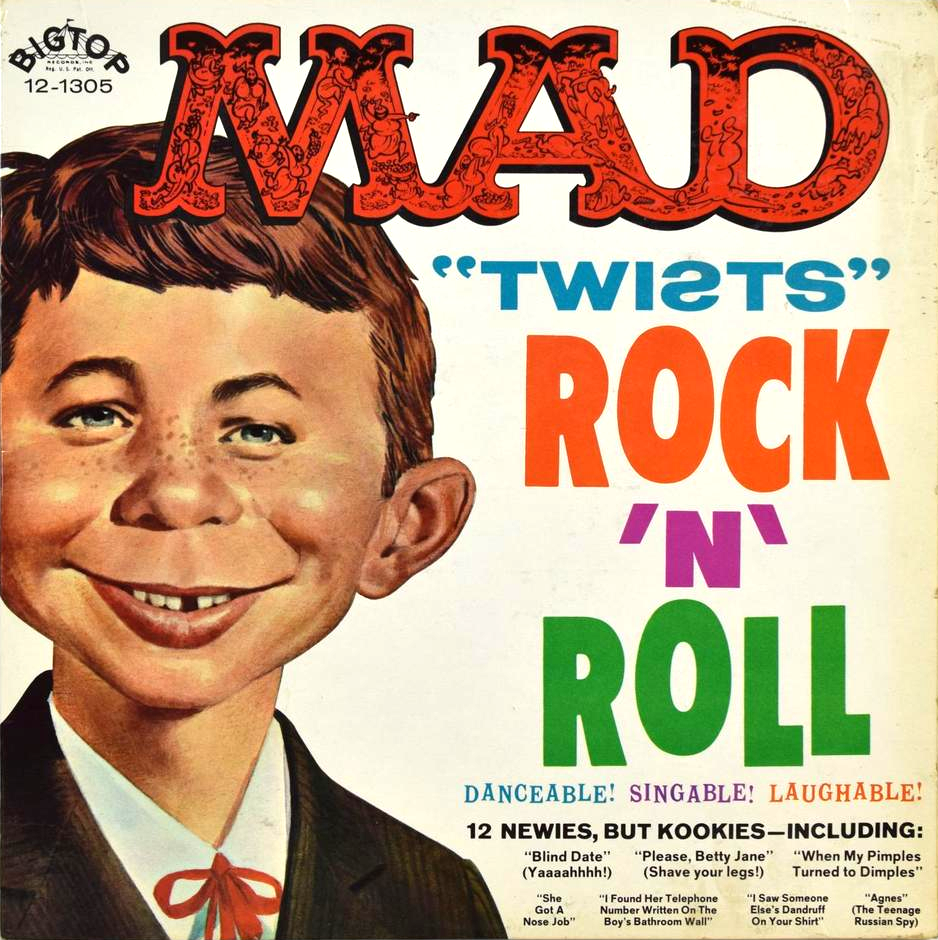
The album was the first time a magazine crossed platforms (now a common occurrence), transmuting from art to music, and spawning such cultural treasures over a decade later as The National Lampoon’s Radio Dinner album and scores of other such multi-media productions. It made a lot of sense too: Mad's sarcastic humor was as much about verbal as visual wit — and in the pre-Beatles sixties, rock n’ roll’s numerous clichés were ripe for parody. Making fun of the ever-popular “my baby died in a car crash” genre with (All I Have Left Is) My Johnny’s Hub Cap, and the “my baby was caught doing it with someone else” genre with Somebody Else’s Dandruff (On My Lover-Baby’s Shirt) or I Found Her Telephone Number Written On The Boys Bathroom Wall may sound puerile today but who knew from puerility back then. Humor was not over analyzed, it just occurred like a bodily function. Mad was the first slap at pop-commercial culture, which has been perfected in the 21st Century by the likes of John Stewart and Stephen Colbert.
Mad "Twists" Rock 'n' Roll was written and produced by Norm Blagman and Stan Bobrick (whose names sounded like Mad characters). The songs were sung in true doo-wop syncopation by Jeanne Hayes, Mike Russo and The Dellwoods (Saul Zeskand, bass, Mike Ellis, first tenor, Andy Ventura, second tenor, C. Victor Buccellato, lead singer, and Amadeo Tese, baritone). I so wanted to be a Dellwood that I made my mom buy Dellwood Milk. The cover of the LP featured that classic moron, Alfred E. Newman, painted by Norman Mingo (a logo more recognizable at one time than the Swoosh). Owning the record made me feel like I was part of a club, which latter evolved into the sardonic, ironic sixties youth culture.
So why am I writing about this album when its not even an major anniversary (47 years old this year). I could reflect on the fact that LPs and CDs will soon be totally obsolete, but that’s not the reason. More to the point, I recently came across the cover for this album and it sparked the notion that every generation has some definitive object that triggers memories — some of these are visual, others visual and oral. For me songs like (Even if I Live to be 22) I’ll Always Remember Being Young and Let’s Do the Pretzel (And End Up Like One) bring me back to a time before art, design, and humor had to be sophisticated to be good.
This essay was originally published on June 8, 2009.
This essay was originally published on June 8, 2009.
